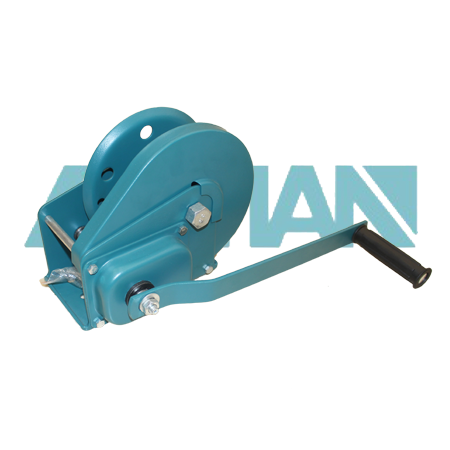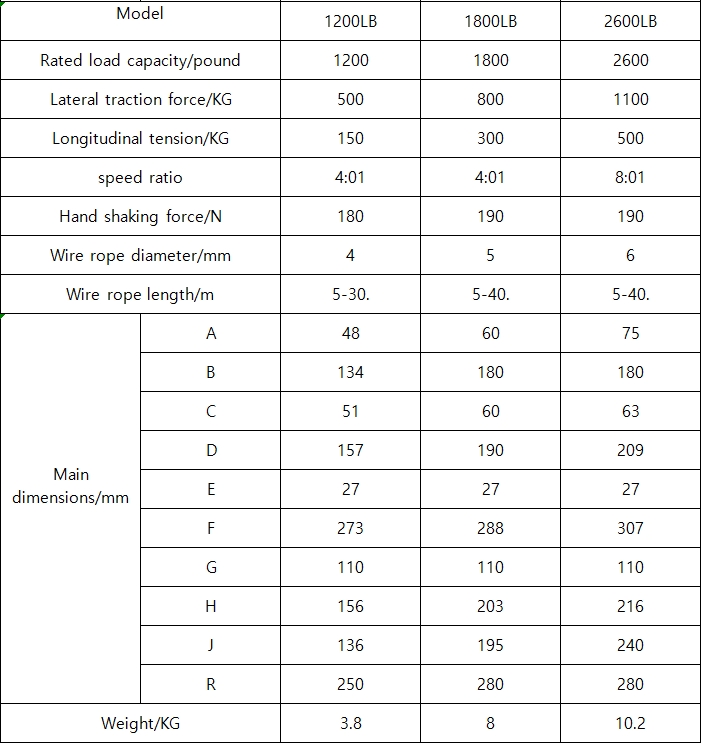 中文版
中文版



Welcome to contact us by phone:0086-0312-7969888
A manual crank winch, also known simply as a hand crank winch, is a mechanical device designed to lift, lower, or pull loads using a manually operated crank. It is a type of winch that relies on human power for its operation, and it typically consists of a winch drum, a gear mechanism, a crank handle, and sometimes a braking system. Here are key features and aspects of a manual crank winch:
Winch Drum:
The winch drum is a cylindrical component around which the cable or rope is wound. As the drum rotates, it either winds up the cable (to lift a load) or releases it (to lower a load or perform a pulling operation).
Gear Mechanism:
A gear mechanism is employed to transmit the rotational force from the crank handle to the winch drum. The gear ratio determines the mechanical advantage, affecting the lifting or pulling capacity of the winch.
Crank Handle:
The crank handle is a manually operated lever that is turned by the user to rotate the gear mechanism and, consequently, the winch drum. The user applies force to the handle, converting human power into mechanical power.
Braking System:
Some manual crank winches may include a braking system to control the descent of a load or to hold the load in place when the crank handle is not actively being turned. The brake helps prevent unintentional movement and enhances safety.
Load Capacity:
The load capacity of a manual crank winch is determined by its design, gear ratio, and the strength of its components. It is important to adhere to the specified load capacity to ensure safe and effective operation.
Applications:
Manual crank winches are versatile and find applications in various settings. They are commonly used in boating for tasks like lifting anchors, on trailers for loading and unloading, in construction for material handling, and in other scenarios where controlled lifting or pulling is required.
Portability:
Manual crank winches are often portable and can be easily transported to different locations. They are suitable for use in environments where power sources may be limited or unavailable.
Versatility:
These winches are versatile tools that can be used for a range of applications, including lifting, lowering, and pulling. The user has control over the winching operation through the manual operation of the crank handle.
Simplicity:
Manual crank winches have a simple design with fewer components compared to powered winches. This simplicity contributes to their reliability and ease of maintenance.
Safety Considerations:
Users should be mindful of safety considerations when operating manual crank winches. This includes proper use of personal protective equipment, careful handling of loads, and adherence to load capacity limits.
Manual crank winches are valued for their simplicity, reliability, and suitability for certain applications where human-operated lifting or pulling is practical and efficient. They provide a cost-effective solution for tasks in environments where electrical or hydraulic power sources may not be readily available.

X